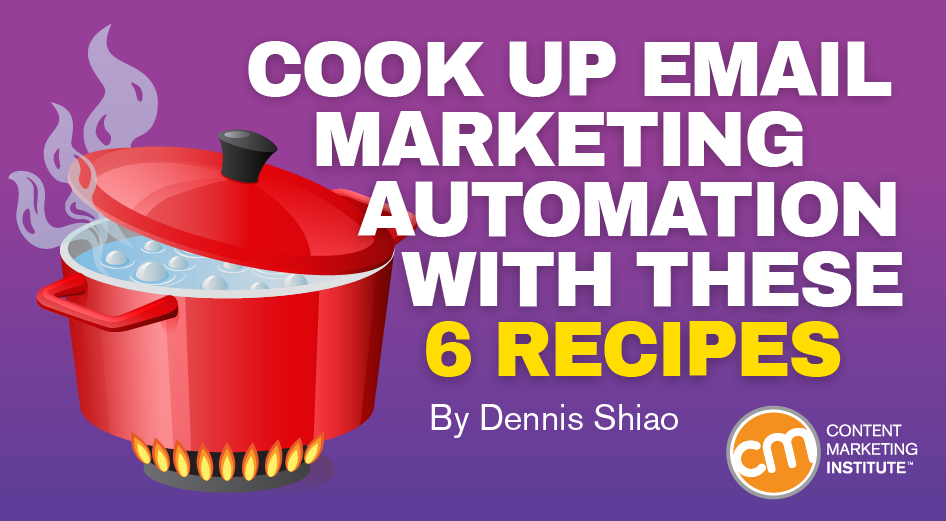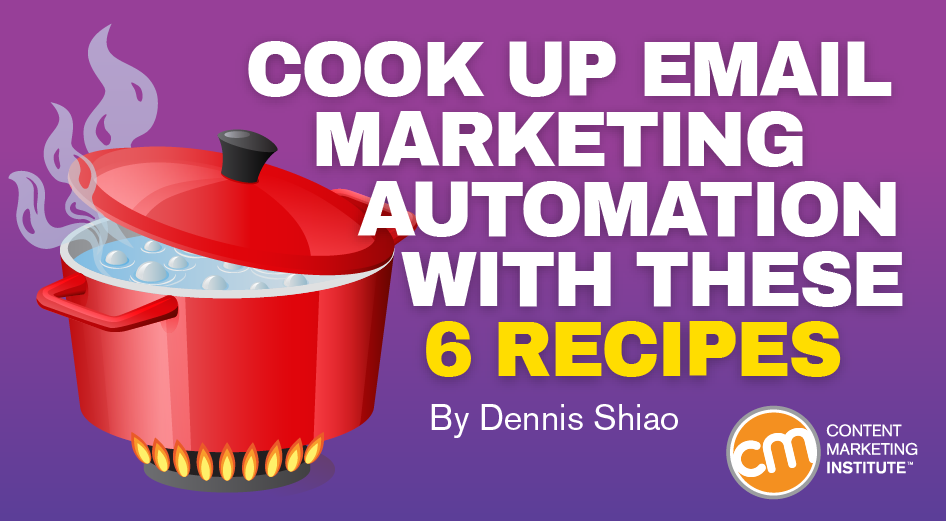Jessica Best references these statistics in her Content Marketing World presentation, Email Marketing Automation at Every Level. Email opt-in (permission marketing) Strong ROI in email marketing is based on the notion that the people on your email list want to hear from you. In a B2B brand, the welcome email can move subscribers down the sales funnel by offering related content or a free product trial. It found that people who purchase a second time are far more likely to become life-long customers. Here’s a glimpse at the emails: Though the third email with the call to action to open a savings account had an abysmal open rate, the bank noticed something surprising: The group receiving it in the series of six onboarding emails had a 40% lift in new savings accounts compared to the group who only received a single onboarding email (with no savings account messaging). When a user opts in to receive emails, Meritage Homes uses data to create personalized emails: The first email (on the left) says, “Hi, Sarah. This is all orchestrated via Meritage Home’s marketing automation platform. You’re getting ready to change your name; you might be considering moving or building a house; you might be considering adoption, etc.” The lesson? Use what you know about your subscribers to get the timing right and make your emails more relevant. Given the single-digit statistics for users of email marketing automation, you’re likely seeing your email program’s ROI fall well short of the 3,800% reported by Litmus.

Brands earn $38 for every $1 they invest in email marketing programs, according to Email Marketing ROI: The Factors That Lead to Better Returns, a research report published by Litmus.
In other words, brands generate a 3,800% ROI on email marketing.
Yet, emfluence’s Email Marketing 2018 Benchmarks Report shares that organizations are slow to adopt email marketing automation – only 2% of emails sent by B2B organizations and 3% for B2C organizations are automated.
Jessica Best references these statistics in her Content Marketing World presentation, Email Marketing Automation at Every Level.
She goes further with the results from emfluence’s research, noting, “Automated emails drive 60% higher open rates and 200% higher click-through rates than your batched or business-usual emails.”
Email marketing automation, Jessica says, can “bring that ship of people to your great content, with the goal of them spending time with you, getting to know you better, and maybe moving down that funnel.”
Despite repeated proclamations about the demise of email, it continues to serve as the foundation for customer acquisition, communications, and support.
Consider online ordering for an e-commerce brand as Jessica shares in the graphic below. Email is the center – to communicate the purchase confirmation and shipping status, and subsequently to solicit product feedback, promote related products, or provide special offers and coupons.

Integration with other data systems
To work effectively, the email platform is the foundation and must integrate with other data systems as shown in this illustration:

The data systems include:
- Customer relationship management (CRM)
- Demand-side platform (DSP)
- Customer data platform (CDP)
- Data management platform (DMP)
As you’ll see in later examples, the email platform leverages this data to provide personalized messages and implement business logic related to email sequences (i.e., determining the next email to send and when to send it).
All brands have a wealth of data. The more connected that data is to their email platform, the closer they get to the 3,800% ROI of email marketing.
Email opt-in (permission marketing)
Strong ROI in email marketing is based on the notion that the people on your email list want to hear from you. If you purchased a list from a broker, the recipients likely don’t want to hear from you. They’re more inclined to block your emails or report them as spam.
In a nod to Seth Godin, Jessica urges you to practice “permission marketing” when building your email lists. “Ask people’s permission to market to them and then when you talk to them, they’ll be listening for what you have to say,” she says. Give them the value you promised at the time you asked for their email, learn what they need, and when they might need it again.
You also need to know why you have the email addresses in the first place or else it’s just “garbage in, garbage out.” As Jessica says, “If you put bad data into your systems, that data is going to make bad decisions about what to send your prospects and customers.”
For example, if the recipients entered the CRM system because they submitted trouble tickets, they haven’t given you permission to send them marketing emails nor are they likely to welcome marketing emails.
Jessica shares three recipe types – beginner, intermediate, and advanced – that can work for marketers with varying email marketing experience.
Welcome email (beginner)
Only 40% of marketers employ welcome emails, Jessica says. That’s a lost opportunity for the missing 60%.
“Your welcome email is likely to be the highest open rate you get on any email you send unless you send a birthday email,” Jessica says.
She shares the Stikwood brand as an example. The “world’s first Peel & Stik reclaimed and sustainable wood planking” sends a welcome email to those who subscribe to its mailing list and includes a 10% coupon in it:

“This coupon generates more revenue than even their abandoned cart email,” according to Jessica.
The lesson? Aim high with your welcome emails. You may think they only serve a logistical need (e.g., acknowledging the subscription), but they can do more. In B2C, as with Stikwood, it drives sales. In a B2B brand, the welcome email can move subscribers down the sales funnel by offering related content or a free product trial.
Feedback-seeking email (beginner)
Based in Kansas City, Mo., Indigo Wild sells natural bath and body products. It found that people who purchase a second time are far more likely to become life-long customers.
Thus, after a customer’s first purchase, Indigo Wild employs a feedback-seeking email, designed to engage them, but also to drive a…

COMMENTS